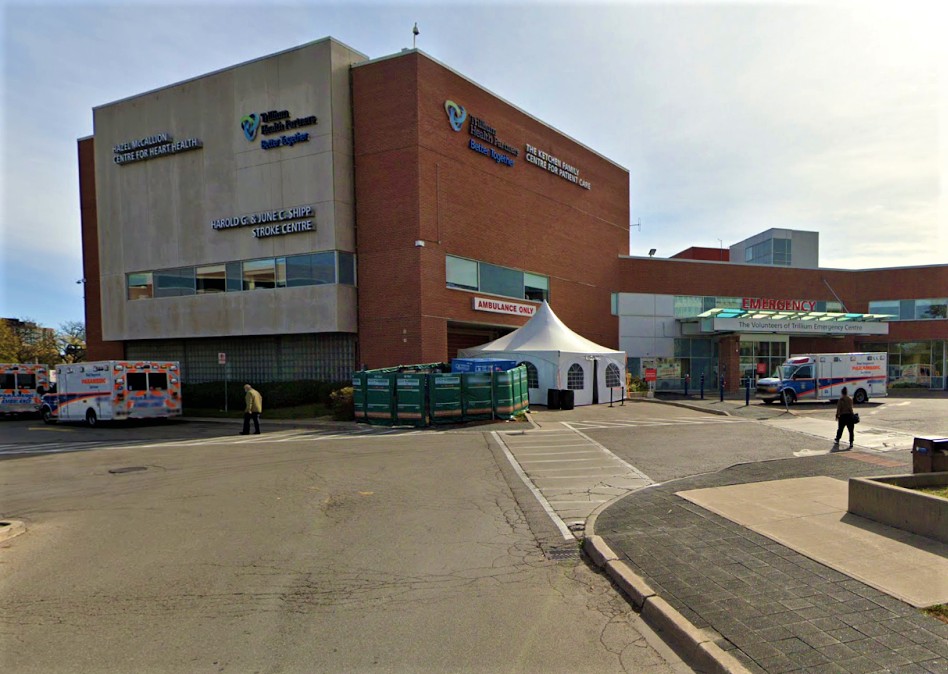
Mississauga Hospital heading for $2 billion rebuild to expand with rest of city
At Mississauga Hospital, a conveyor belt of desperately ill patients are treated by exhausted staff.
For more than a year, frontline healthcare workers have performed in a system revealed by the pandemic to be inadequate in many ways.
Hundreds of patient transfers out of Peel hospitals are happening because of the region’s lack of healthcare capacity.
While Brampton rightly receives national headlines for its decades-long crisis, Mississauga is also in a dire situation, as its population continues to outpace most cities and the number of hospital beds needed to look after residents has not kept up.
Mississauga’s healthcare system desperately needs to expand with the rest of the city.
Mississauga Hospital was originally built at 100 Queensway West in 1958 to serve a community of villages, farms and townships. A couple of decades later, its sister facility, Credit Valley Hospital, came online in Erin Mills shortly after Mississauga pulled all the smaller burroughs together to become a city.
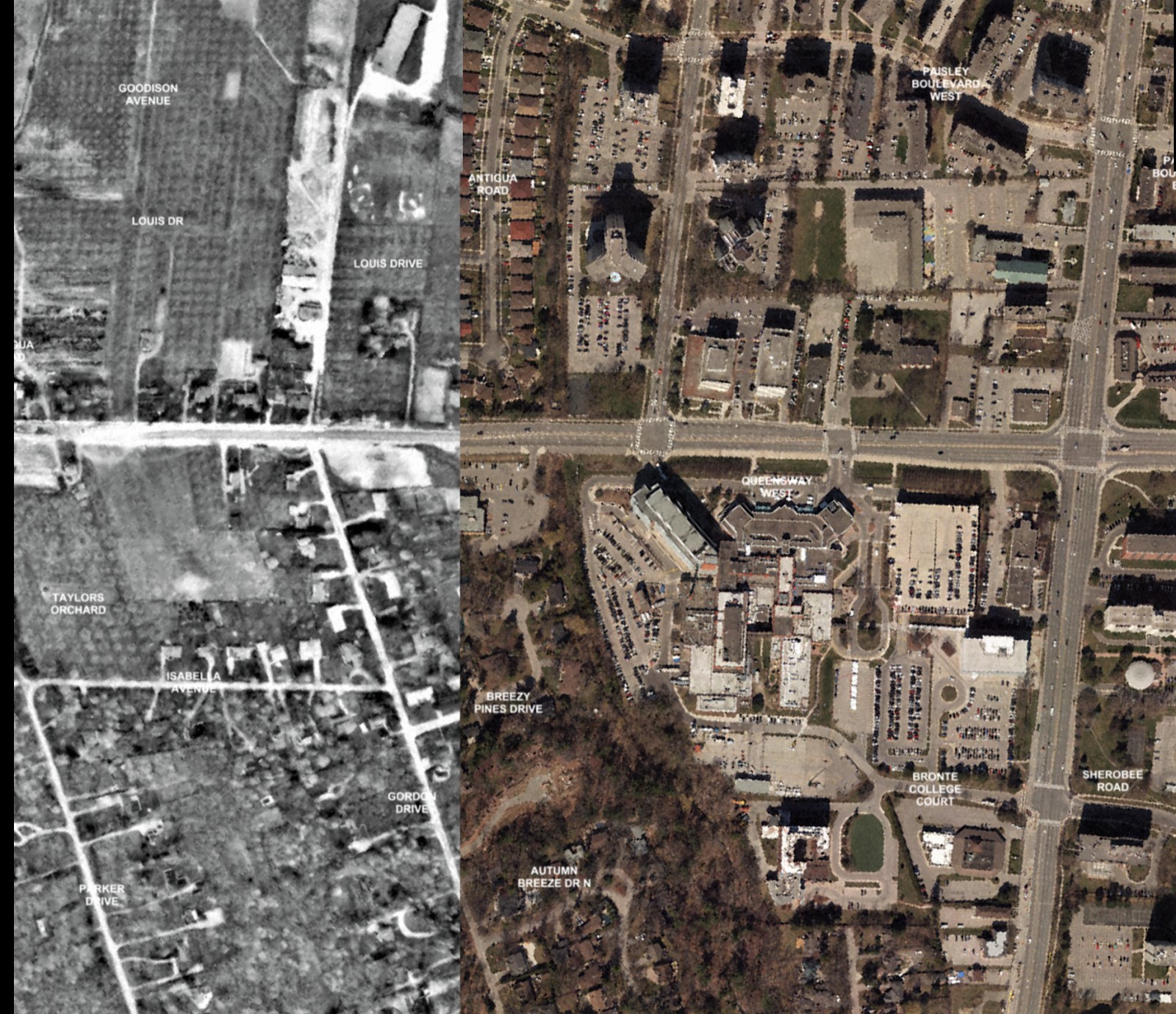
The area around Mississauga Hospital has changed dramatically between 1966 (left) and 2020 (right).
Since then, various projects have been undertaken to expand the two hospitals.
In 2018, an expansion at Credit Valley doubled the size of its emergency department, one of several changes that have been made over the years. Even with the piecemeal investment the pressure has grown.
Now, a major piece of healthcare infrastructure is set to arrive in the city.
The PC government’s latest budget document vaguely promises to rebuild Mississauga Hospital.
The project has been in the pipeline since the previous Liberal government, but details are scarce. The demand, however, is crystal clear; it’s something Mississauga desperately needs.
“It is difficult to commit to start and completion dates before the winning team has been selected, as this team will include a schedule with its bid submission,” a spokesperson for Infrastructure Ontario told The Pointer, referencing plans to finalize a construction contract in 2023.
In 1986, the year after Credit Valley Hospital, the second in the city, was opened, the population of the area now known as Mississauga was 374,005. Estimates from Statistics Canada last summer pegged the population at 769,050. Mississauga’s population has grown 106 percent since 1986, but it does not have four hospitals to accommodate that growth.
Instead, Trillium Health Partners (THP), the hospital network responsible for Mississauga, which also operates the Queensway Health Centre in Etobicoke, has a long-term plan. Through renovations and rebuilds, it intends to have a total of 2,000 beds by 2029.
According to THP’s most recent annual report, the hospital currently has 1,397 beds across its three facilities. The hospital did not confirm how many were in Mississauga, but THP’s website lists 382 beds at Credit Valley and the University of Toronto’s medical program, which uses Mississauga Hospital as a teaching facility, says it has “827 acute, rehabilitation and chronic care beds”. Combining these numbers for a rough total of 1,209 beds and dividing the figure by Mississauga’s 2020 estimated population shows expansion is badly needed. The city has roughly 1.6 beds per 1,000 residents, above Brampton’s pitiful allocation of 0.9 beds, but still well below the Canadian average of 2.5 per 1,000 residents.
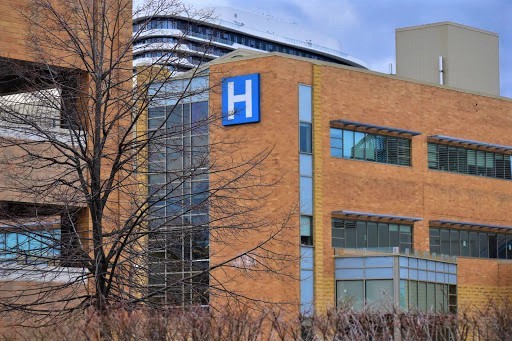
Credit Valley Hospital received its most recent makeover in 2018 as part of THP’s long-term plan.
“Investments have not kept pace with the growth and changes in [the] community,” THP’s strategic plan admits. It describes the network as “under-resourced for the size and needs of the community”, adding that no hospital system in Ontario will receive more demand for acute services across the next two decades.
According to figures maintained by Health Quality Ontario, an agency of the provincial government, Mississauga’s strained hospitals perform poorly. In Ontario, the target time for a patient to be admitted into a hospital bed from the emergency department is eight hours. It is met just 35 percent of the time.
Unimpressive as the provincial average may be, Mississauga’s record is worse.
February data show Mississauga Hospital hit its target just 26 percent of the time, with an average wait of 17.6 hours to be admitted from the emergency room, while Credit Valley met it just 14 percent of the time with an average wait of 21.8 hours. For comparison, Brampton Civic, the city’s only hospital and the poster child of hallway healthcare, hit its target 17 percent of the time with an average wait of 18.9 hours.
By 2041, the communities THP serves are set to grow by 45 percent, an increase that translates into roughly one million new residents. The majority of the population increase will take place before 2035, with 650,000 extra citizens projected in the surrounding communities. This increase will see THP’s catchment rise from 2.2 million to 3.2 million residents by the early 2040s.
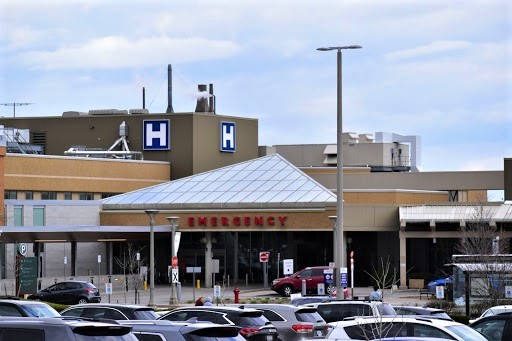
On average, patients waited 21.8 hours in February to be admitted from the Credit Valley emergency room, one of the worst records in Ontario.
A handful of throwaway lines in the Ontario 2021 budget offer hope that THP’s plan to deal with its overwhelmed system can be achieved. The latest financial blueprint from Queen’s Park confirmed plans already under consideration by Infrastructure Ontario to send significant funds to the Queensway Health Centre and completely rebuild Mississauga Hospital.
“The first conceptual plans for the redevelopment of Trillium Health Partners’ Mississauga Hospital and Queensway Health Centre sites began in 2014 and have continued to progress since that time,” Adam Cotter, manager of major projects and public affairs for THP, told The Pointer. “The redevelopment projects — including a new hospital at the site of the existing Mississauga Hospital, and an expansion at Queensway health Centre — will add new hospital beds and replace existing beds. Details will be shared when finalized. The projects will also free up capacity at the Credit Valley Hospital site.”
Details from THP and the provincial government are limited.
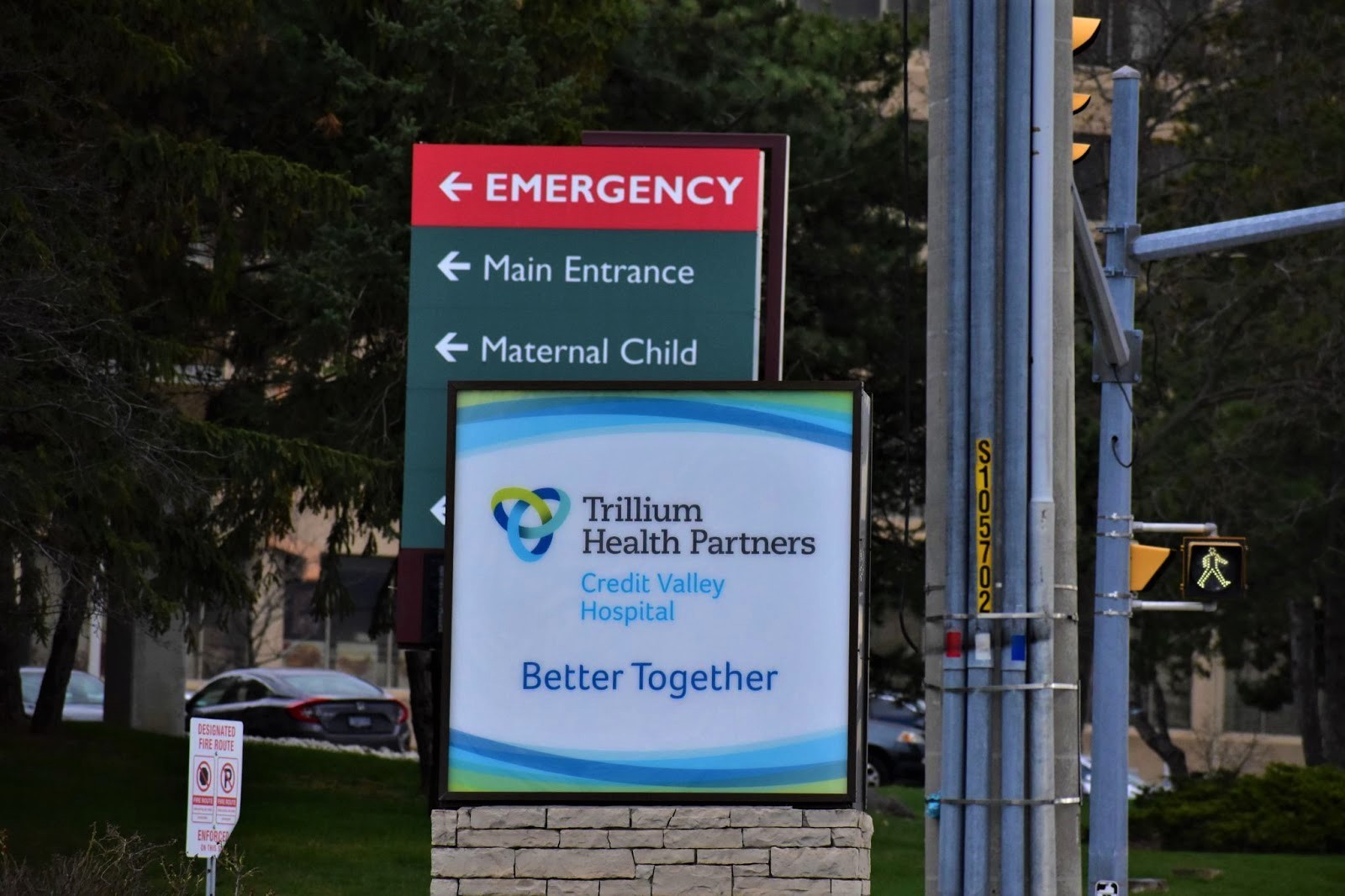
The Mississauga Hospital rebuild will free up space at Credit Valley Hospital.
Tender documents issued in 2017 to create a “master plan” for the Mississauga Hospital rebuild say early plans were completed in 2014 and 2016. “The purpose of this study is to engage broader involvement of the professional design community to explore different Master Plan possibilities and alternative options and thereby achieve greater insight into THP M-site (‘Mississauga Hospital Campus’) development potential,” the tender details explain.
Details available through Ontario’s most recent P3 market update show that planning and design contracts for the project have been awarded.
According to Infrastructure Ontario, “Trillium Health Partners is following the Ministry of Health’s five-stage approval process for capital projects, which includes submissions related to functional programming, block diagrams and project specific output specifications.”
A request for qualified bidders to submit their interest in rebuilding Mississauga Hospital will be accepted in winter 2022, with the contract set to be finalized by 2023. The estimated cost of the project is in excess of $2 billion.
“To ensure the integrity of the procurement process, we are not able to confirm cost estimates at this time,” Cotter said. “Once the procurement phase for the project is completed, the cost and contract with the successful bidder will be released publicly following financial close, and will be posted on Infrastructure Ontario’s website.”
Infrastructure Ontario provided a similar quote.
The bulk of funding for the work will come from the Ministry of Health, but a local share will also be required. This figure has not yet been decided and will be “determined as planning work progresses”. THP has started saving some money for the work, including through a photobook fundraiser to celebrate former Mississauga Mayor Hazel McCallion’s 100th birthday.
The City of Mississauga will likely be asked to contribute, as the local share of a $2 billion capital project for a new hospital could be as high as $500 million. The City would need to look at increasing property taxes, borrowing externally or introducing a special levy, all of which are funded by property owners one way or another.
As 2029 rolls closer, the pressure on Mississauga’s two hospitals will only grow.
The pandemic has shown the city’s healthcare system on the brink, reliant on patient transfers to other hospitals to survive. The chaos will hopefully never be repeated, but a quickly growing population could put similar pressure on the system in the future.
For now, residents must wait for further details to see a contract signed that guarantees shovels will enter the ground for THP’s expansion plans, bringing Mississauga closer to the number of hospital beds its residents desperately need.
Email: [email protected]
Twitter: @isaaccallan
Tel: 647 561-4879
COVID-19 is impacting all Canadians. At a time when vital public information is needed by everyone, The Pointer has taken down our paywall on all stories relating to the pandemic and those of public interest to ensure every resident of Brampton and Mississauga has access to the facts. For those who are able, we encourage you to consider a subscription. This will help us report on important public interest issues the community needs to know about now more than ever. You can register for a 30-day free trial HERE. Thereafter, The Pointer will charge $10 a month and you can cancel any time right on the website. Thank you.
Submit a correction about this story


